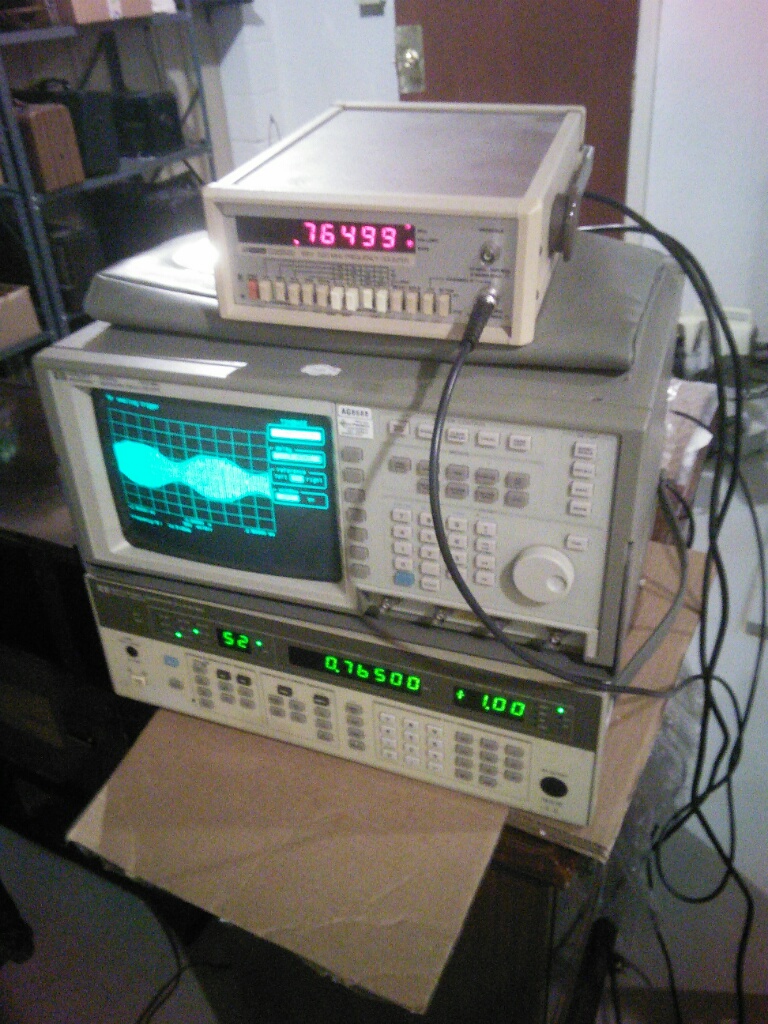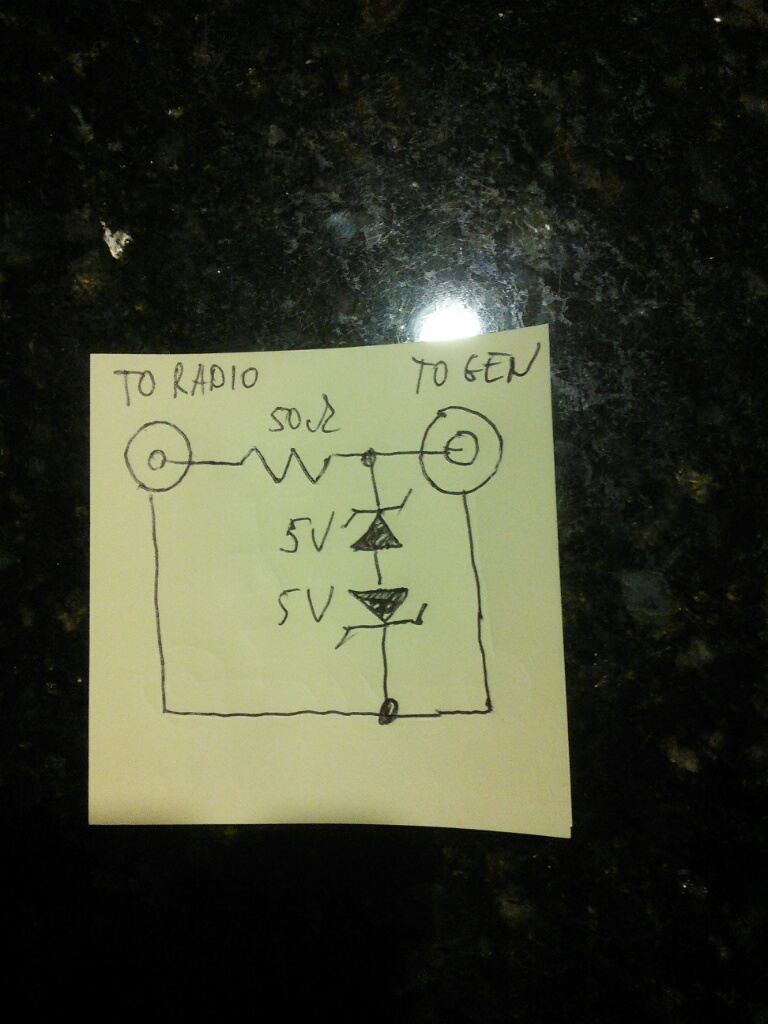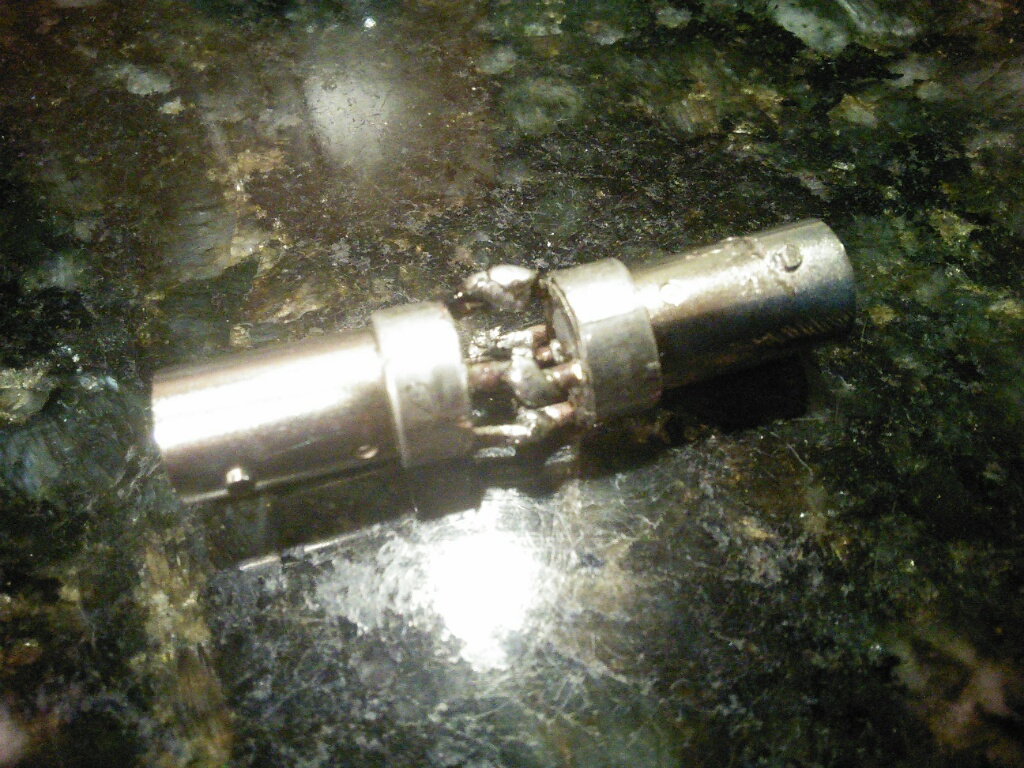11-09-2018, 06:53 PM
As I told before, I bought an HP sig gen. Before I use it, I decided to make a quick jig to protect it from those charges that sonetimes kill SS output, even when connected through a cap.
This is the generator (the bottom piece)

This is the sch of the jig
The resistor is small, can be from ohms to 20-50 ohm. The Zener is one part, back to back pair. The polarity doesn't matter, could be plusses or minuses out. I had 5.6V ones.
The voltage is thus clamped at 5.6+0.7V=6.3V. Could be higher or lower. The output signal is 1V RMS or 1.4VPP so anything between 2V and 10V is ok.

This is the jig

The zener and the resistor are small, SC-89-3 and 0603 respectively. But the connectors soldered back to back are so rigid that no effort is transferred to the small components inside.
This is the generator (the bottom piece)
This is the sch of the jig
The resistor is small, can be from ohms to 20-50 ohm. The Zener is one part, back to back pair. The polarity doesn't matter, could be plusses or minuses out. I had 5.6V ones.
The voltage is thus clamped at 5.6+0.7V=6.3V. Could be higher or lower. The output signal is 1V RMS or 1.4VPP so anything between 2V and 10V is ok.
This is the jig
The zener and the resistor are small, SC-89-3 and 0603 respectively. But the connectors soldered back to back are so rigid that no effort is transferred to the small components inside.
People who do not drink, do not smoke, do not eat red meat will one day feel really stupid lying there and dying from nothing.



![[-] [-]](https://philcoradio.com/phorum/images/bootbb/collapse.png)


